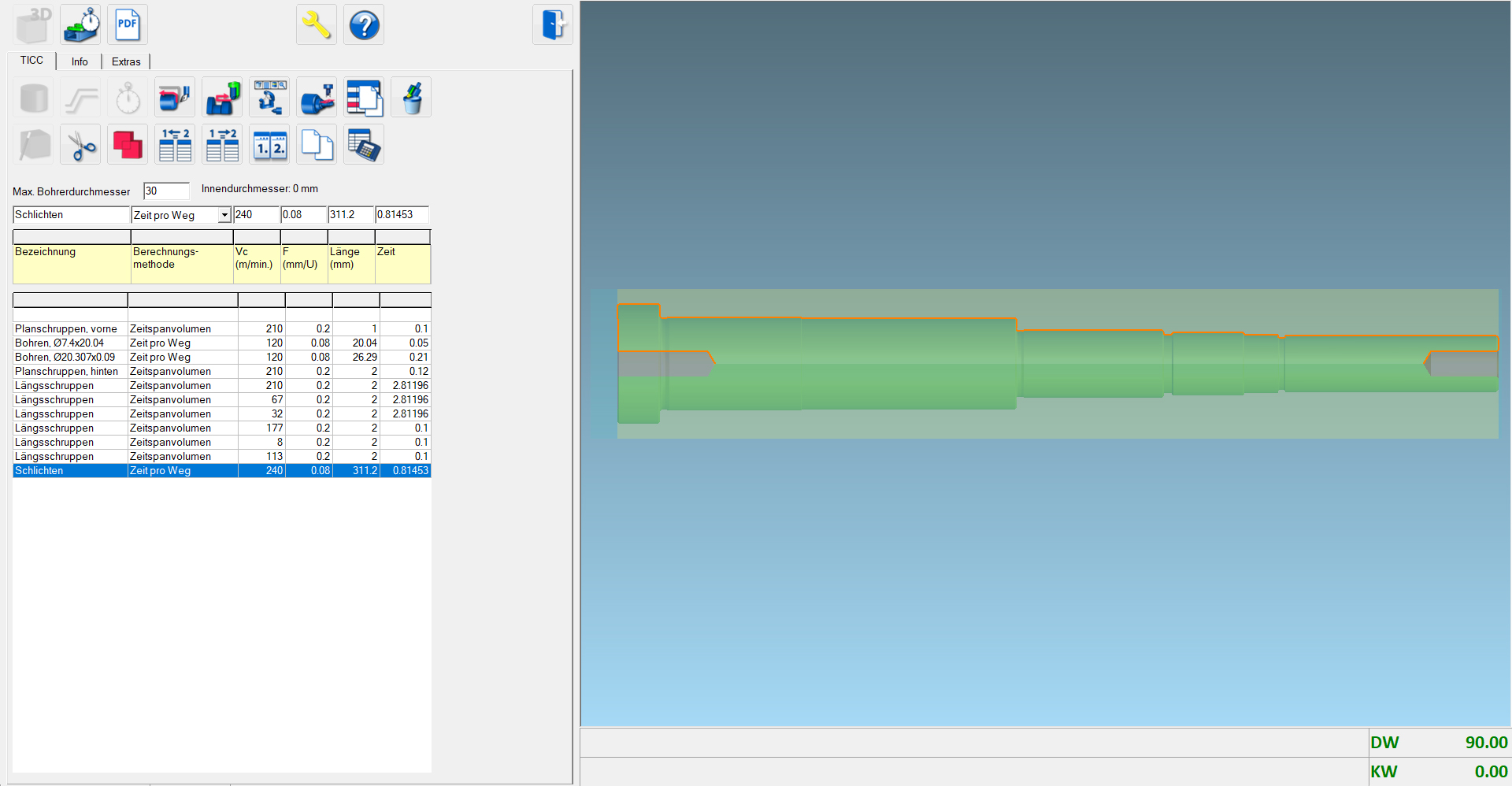TICC – Turning
module
EXAMPLE OF A COST CALCULATION
You are currently viewing a placeholder content from Youtube. To access the actual content, click the button below. Please note that doing so will share data with third-party providers. More Information
CALCULATION USING A 3D VOLUME MODEL
This example is to calculate a turned chuck part with two clamping units and attachments such as a steady rest, tailstock, measurement, etc.
Learn just how precisely and quickly your calculation for your turning parts can be completed based on the example calculation.
FUNCTION IN THE
Workflow
This workflow describes the function of the TICC module turning using an example. Get to know the work procedure and the individual work steps.
Loading the 3D model
Read more
The 3D volume model of the blank and the fished part were created by construction in SAT format, but can also be read as STEP, CATIA or any other CAD models.
Automatic feature recognition
Read more
Time calculation can be started at immediately once the blanks and finished parts are known. The part to be produced is now analysed for roughing, smoothing and penetration operations.
Additional smoothing, e.g. for fittings can be indicated by selecting the corresponding location with a click.
Cutting data are automatically suggested based on material and tool data. However, they can be adjusted at any time. The blank can also be replaced without having to indicate the processing details again. A new time is simply calculated with reference to the new blank.
Distributing processing
Read more
Workpiece analysis cannot tell automatically from which position onwards processing must be interrupted because it can only be completed after clamping it in a new position. Therefore, it is possible to divide processing steps and to shift them accordingly in the processing sequence. This way, bilateral processing of the workpiece with clamping in a new position can be calculated.
Thread turning
Read more
Different screw thread types special processing methods such as tailstock and steady rest positioning and returning, or knurling, measuring, changing the clamp position, etc. can be indicated, and thereby included in the time calculation.
Equipment and secondary times
Read more
Time calculation can be started at immediately once the blanks and finished parts are known. The part to be produced is now analysed for roughing, smoothing and penetration operations.
Equipment times and secondary times may take a lot of time based on workpiece. they may also be defined or loaded.
Time calculation and data sheet
Read more
A calculation data sheet where all processing steps and times (the, th, tn, tr) are listed is part of this, just as for milling and drilling.
Data handover and cost calculation
Read more
Finally, the work schedule and bill of materials is used to determine a quoted price with reference to the hourly machine rates and the material costs.
Lowering costs! Saving time! Increasing the calculation quality!

